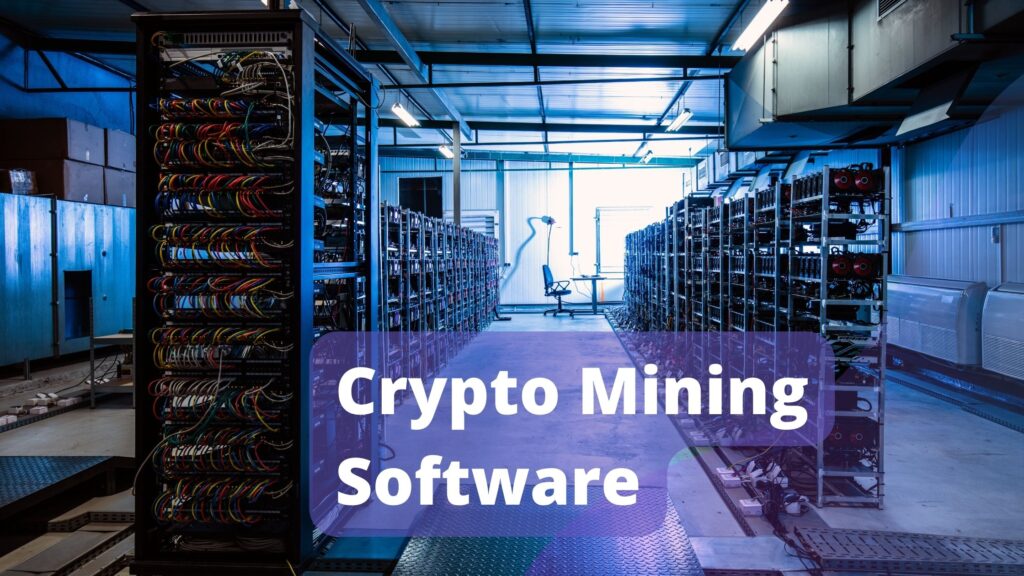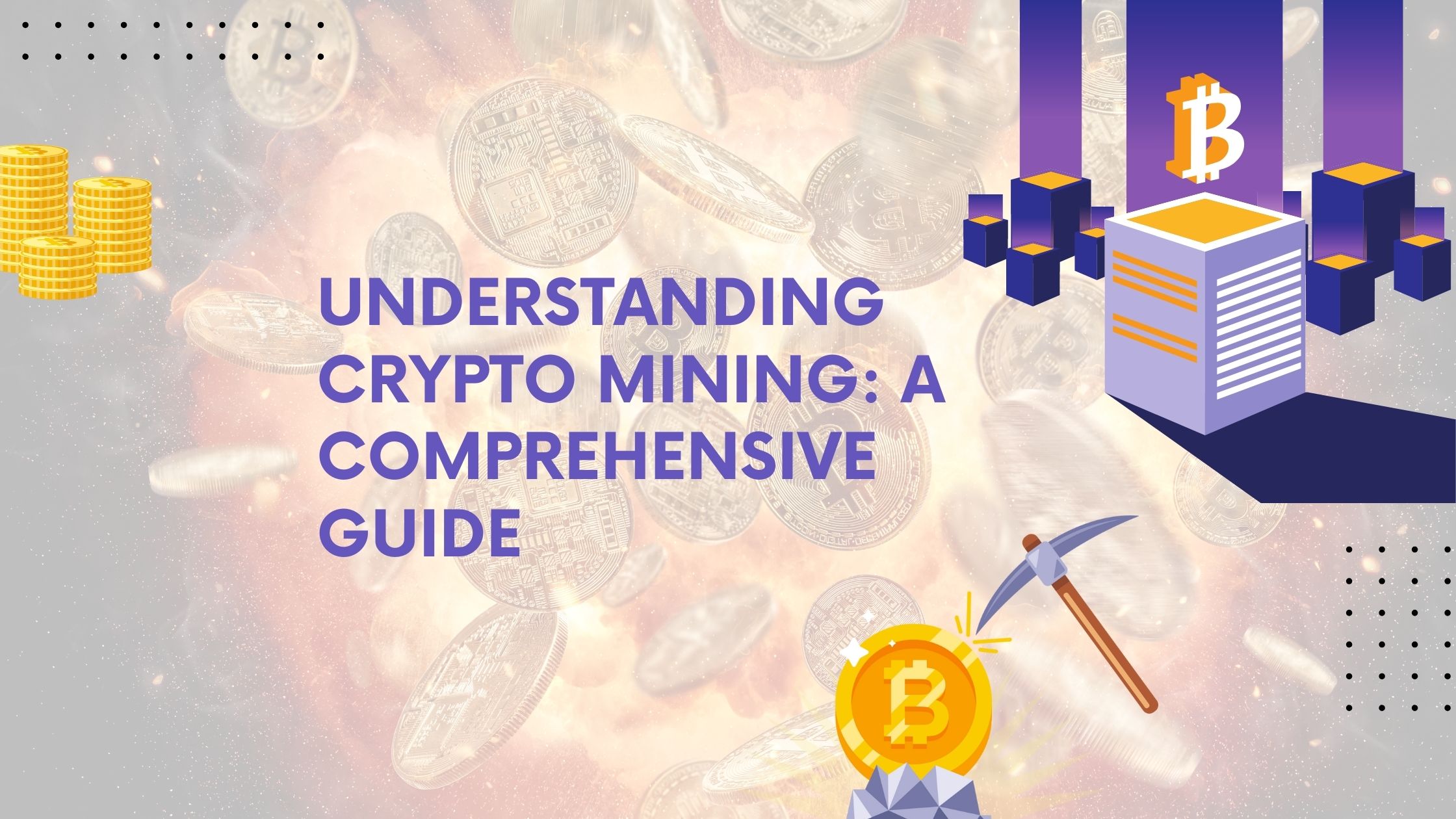Introduction
Cryptocurrency is a currency that exists digitally and uses cryptography operate transactions. It does not have a central issuing or regulating authority; instead, it has a decentralized system to record transactions and issue new units.
Further, Crytpominig uses specialized resources to add blocks to a blockchain. Therefore, by adding a new block to a blockchain, validates transactions, records the latest transaction, and mints new tokens.
1. What is Crypto Mining?
- Definition and basic concept of crypto mining.
It is the process of validating a cryptocurrency transaction. Moreover, it is like bitcoins distributed to the users to record their transactions. Additionally, the transaction is linked to the previous and succeeding transaction creating a chain of time-stamped records called blockchain.
- Importance and purpose of mining in maintaining the blockchain.
The purpose is to verify transactions and add them to the ledger by blockchain. On the other hand, it ensures a record of all the transactions within the network. Moreover, as a reward miners receive cryptocurrency tokens as an incentive to encourage them.

2. How Does Crypto Mining Work?
- Explanation of the mining process.
Mining is an extensive process that consists of mining drives and software that enables additionally solving cryptographic problems.
- The role of miners in verifying transactions.
The Crypto mining process also ensures transactions on the crypto network. Additionally, as an incentive to participate bitcoin is rewarded to the miners who can encode it.
- Proof-of-Work (PoW) and its significance.
It is a decentralized mechanism that requires network members to expand by solving an encryption puzzle. PoW is called mining to receive the incentive when the work is done.
3. Types of Crypto Mining
- Solo mining vs. pool mining.
Solo mining offers higher returns whereas, pool mining does not. Consequently, solo mining requires a higher amount of patience. It can take longer to find the blocks. In conclusion, pool mining is preferred for bitcoins. Solo mining should be pursued if large hash amounts are acquired.
- Cloud mining.
Cloud mining is used to mine cryptocurrency;In conclusion, it allows people to open accounts and participate in the process of mining for a fee.
- Pros and cons of each method.
Solo mining offers a higher return than pool mining but it takes longer time and patience to solve. Additionally, pool mining takes less time and returns a lesser amount.
4. Crypto Mining Hardware
- Overview of different mining rigs
It is a computer system which solves complex mathematical problems under the Bitcoin network. In conclusion, they are built to find a solution first among the network rigs and in return they receive bitcoins.
- Choosing the right mining rig.
Top pics for miners include the Antminer S19 pro and AntminerS17. Furthermore, the top miners suggested are GPU rigs that are popular for mining.
- ASICs vs. GPUs.
ASICs are the hast-rate race that has more energy efficiency.GPU sometimes does lag in performance but offers flexibility to mine.SICs are higher investment but have lower operational costs whereas, GPUs are accessible but are less energy efficient.

5. Crypto Mining Software
- Popular mining software options.
Some of the popular mining operations are Awesome Miners, CG Miners, ECOS and Kryptex.
- How to set up and configure mining software.
However, after checking for hardware requirements installing software and configuring them. Setting the wallet and networking, keeping the security measures and maintaining. Testing it before launching it.
- Tips for optimizing software performance.
By clearing cache and profiling and following the coding standards you can optimize your software performance.
6. Calculating Crypto Mining Profitability
- Factors affecting mining profitability.
Factors include the size, grade and idea of deposits. Economic factors like the demand for mineral technology also affect.
- Using crypto mining calculators.
Consequently, crypto mining plays an essential role in the effective mechanism and distribution of digital rewards for those users who add blocks to the blockchain, and receive transaction processing fees and tokens.
7. Legal and Regulatory Considerations
- Is crypto mining legal?
In many places bitcoins are legal however, there are still countries where it is illegal so you must check the status before starting mining.
- Regulations and compliance in different regions.
Moreover, the sale of cryptocurrency is regulated if the sale consists under the security of state or federal law or if it is considered as making business under federal law.
8. Challenges in Crypto Mining
- Common issues and solutions.
Furthermore, some of the common problems are high energy consumption, equipment cost, Technology complexity and diminishing profitability with various tax reporting challenges
- Why is crypto mining noisy?
To set up facilities the system awards the miners with bitcoins that are worth money but all those computers burn and make a lot of noise.
- Dealing with hardware failures and maintenance.
It is recommended to back up your data to a location or cloud storage that ensures you recover quickly in case of hardware failure. Moreover, you are suggested to recover the outline steps to be taken in case of major hardware failure.
9. Future of Crypto Mining
- Trends and advancements in mining technology.
Global crypto mining is expected to increase to 4707.69 million by 2028 showing a 1.8 percentile rise.
- The impact of Proof-of-Stake (PoS) on mining.
It is a consensus algorithm where miners plot their hardware to take part in transaction verification. Miners will store the solutions to problems even before the mining has begun.
- Predictions for the future of crypto mining.
Analysts are hopeful that Bitcoin rewards its miner by 50 per cent. However, it is a growing industry as the size increases and the need for miners also increases.
Conclusion
In conclusion, the analysis estimates that the crypto market will triple by 2030, which leads to a big trade. To learn more about crypto mining and cryptocurrency, visit cryptogreenforce.com. Moreover, cryptocurrency is only understood among a fringe community and is now becoming a known household name.
FAQ
- How do you mine crypto?
Miners conduct mining by using designated hardware and softwares to generate a cryptographic number that is equal to or less than the Bitcoin network’s algorithm. The first miner to solve the problem receives incentives.
- Is crypto mining profitable?
With the right setup, bitcoin mining is profitable. However, you cannot estimate the amount you can earn by mining.
- Is crypto mining legal in india?
Crypto mining is legal in India but there are different tax implications that you need to follow.
- How to do crypto mining?
Firstly, download mining software, then login to a website and set up the device in a proper location with proper cooling. Moreover, mining generates lots of heat and has fire risk if not being careful.



